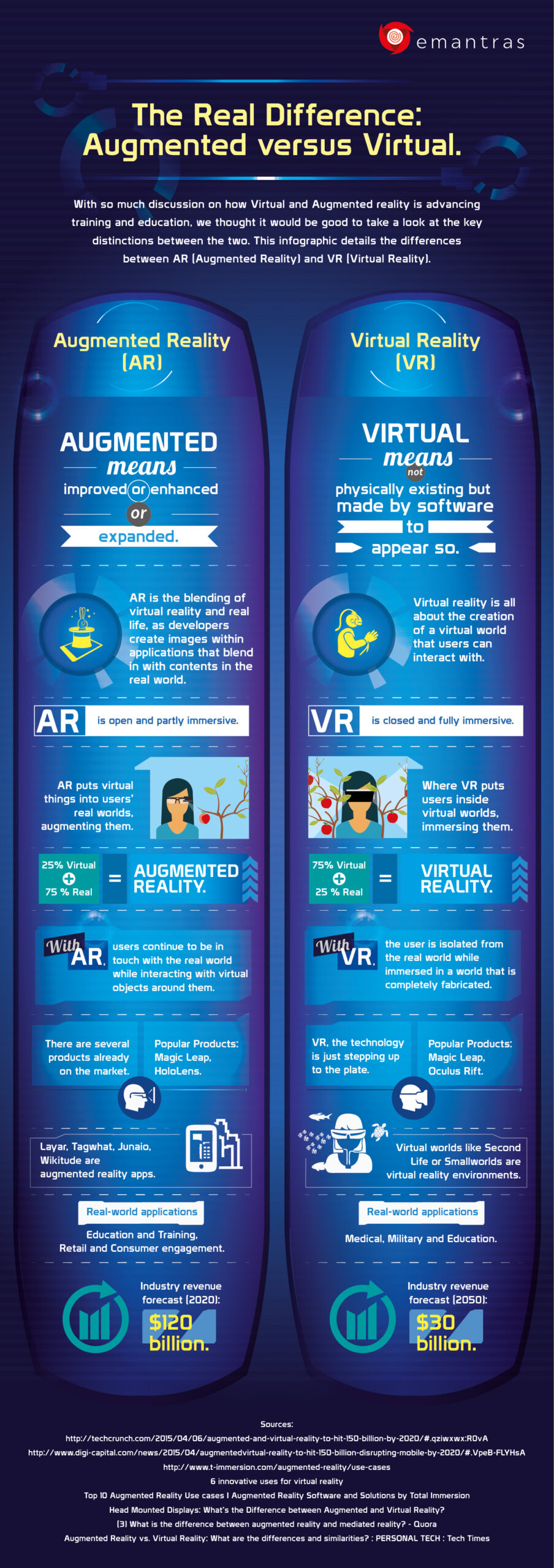With both Augmented Reality and Virtual Reality growing in popularity, it is important to understand the difference between the two. Augmented Reality blends virtual reality with real life, putting virtual items into real worlds. AR consists of 25% virtual and 75% real environments, making it only partially immersive. Users are able to still be in touch with reality, while at the same time can interact with virtual objects around them. AR applications would best be used in education, for training purposes, and in retail to increase consumer engagement. There are a few AR devices currently on the market, including Magic Leap and Microsoft’s HoloLens.
Virtual Reality, on the other hand, creates a fully virtual world for users to interact in and immerse themselves. VR is made up of 75% virtual and 25% real environments. VR devices isolate the user from the real world and immerses them into a world that is completely fictional. Users looking for a virtual world to delve into can turn to games such as Second Life or Smallworlds. VR can also be very helpful by aiding in training in Medicine and the Military, and can also assist in Education. Both AR and VR are expected to grow immensely over the coming years, AR projected to reach $120 billion in revenue by 2020 and VR expected to reach $30 billion by 2050; with that kind of growth it’s almost difficult to image how impressive these technologies will become in the years to come.
Below is the full infographic by Emantras:
